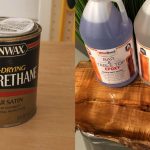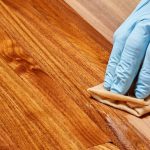Can You Stain Poplar Wood? Best Stains and Helpful Tips
Poplar wood is a straight-grained hardwood commonly used to make cabinets, furniture, and wooden toys. However, while it is considered a hardwood, it is one of the softest woods.
And because of its softness, can you stain poplar wood? Yes, you can stain poplar wood, but the process is more challenging because this wood is too porous and available in many colors. However, you can effortlessly stain poplar with proper sanding, using a pre-stain wood conditioner, and the best stain color.
So then, what is the best stain color for poplar wood? In this article, we will explore how to stain poplar wood and the best gel stain for poplar to use.
Can You Stain Poplar Wood?
Yes, you can. But it is not simple to stain like other woods such as cherry, cedar, and oak. This happens because of the different colors of poplar wood available and its low density.

As it turns out, poplar wood is available in colors like dark brown, ivory, white, green, purple, and creamy yellow. Unfortunately, compared to darker colors, such as dark brown, white-colored poplar can give you more blotchy results when stained incorrectly.
Another reason it is not easy to stain poplar is because of its low density, making it too porous. Because of this, the wood tends to absorb the stain unevenly in some parts, leading to a splotchy appearance.
How to Stain Poplar Wood?
Now, while it is not easy to stain poplar wood, it is not impossible. The secret to staining this wood is good preparation and using a pre-stain wood conditioner.
Below, we will discuss the steps of staining poplar wood. You can also watch this video for better illustrations.
Step 1: Gather your Materials and Supplies
Once you have your poplar wood, you must gather all the necessary materials and tools required to complete the job. These include:
- Sandpaper (100 and 220 grit) or orbital sander
- Stain and topcoat
- Wood conditioner
- Paintbrush
- Facemask and gloves
- Rags and drop cloth
Step 2: Prepare the Work Area
Find a well-ventilated workspace. If working indoors, ventilate the work area by opening nearby windows and doors. You can also use fans to keep air current flowing and a drop cloth to put on the floor.
Step 3: Sand the Wood
Wear your protective gear, including gloves and face mask, to avoid breathing in wood particles. Then, get your 100-grit sandpaper and sand the wood along the wood grain’s direction. You can also use 80-grit sandpaper.
Once you are done, smooth out your poplar wood with 180-grit to 220-grit sandpaper. Alternatively, you can use an orbital sander for a really nice finish, starting at low grit.
The purpose of sanding is to remove any coating on the wood and make the surface even.
Step 4: Spray Water on the Surface
If you use a water-based pre-stain conditioner, spray some water on the wood’s surface to raise the grain. Then, use a paper towel to wipe away the water to ensure the wood does not get soaked.
After the water has dried, sand the wood again with 150-grit sandpaper. And for the edges, use 220-grit sandpaper. Then, leave the wood to dry overnight.
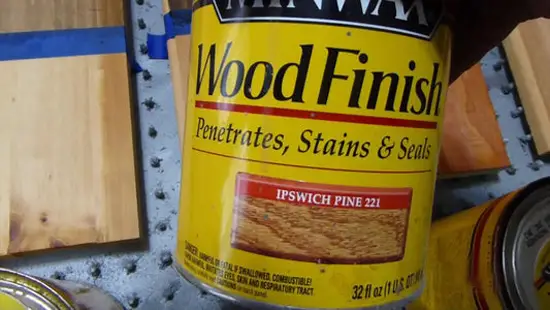
Step 5: Cleaning Up
If you use an oil-based wood conditioner, skip step 4. Then, wipe all the sawdust on the wood’s surface with a clean rag or brush after you are done sanding. You can also use an air compressor to blow away the dust.
Step 6: Apply Wood Conditioner
Next, use a paintbrush, stain pad, or a clean cloth to apply your wood conditioner in the grain’s direction. This will allow the stain to be absorbed evenly on your poplar wood, preventing splotches.
Allow the conditioner to sit for at least 30 minutes to 2 hours and wipe off any excesses.
Step 6: Stain Application
After the conditioner has dried entirely, use a paintbrush to apply a thin coat of your preferred stain on the wood. One coat should be enough, especially when using gel stain.
However, if you want more coverage, a darker color, or use regular stains, you can apply at least two coats. Just make sure to allow each coat enough time like 2 to 4 hours, to dry before applying another.
Step 7: Seal the Stained Surface
Give the stain at least 24 hours to dry. Then, apply a clear wood sealer to enhance the stain’s color and protect your poplar from damage. You can use polyurethane or shellac clear coats.
Next, let the sealer dry and clean your workspace, making sure to dispose of the rags, face mask, and gloves safely.
What Are The Best Stain Colors for Poplar Wood?
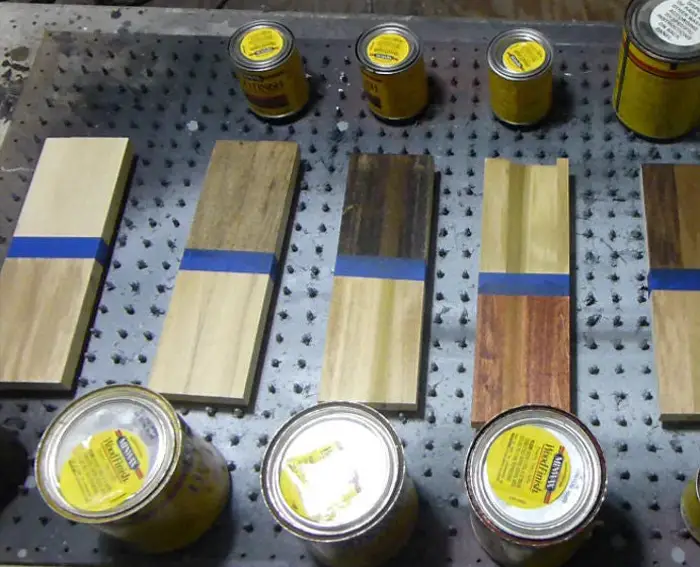
The best stains for poplar wood include oil-based, gel stain, water-based, or DIY natural wood stains. These stains come in different colors to choose from, including:
- Dark walnut
- Classic gray
- Walrus oil
- Weathered oak
- Sun-bleached
- White ash
- Early American
- Briar smoke
However, the best stain color depends on your style and the look you want.
For example, you might want your poplar wood to look like expensive finer wood like Cherry. In this case, you can use a red gel stain. On the other hand, if you want to create the look of walnut wood, the best stain color would be dark brown.
Is It Better To Paint or Stain Poplar Wood?
Because of its fine pores, poplar wood is effortless to paint than stain. After all, paint does not soak into the wood. However, staining poplar makes it appear more like expensive, fine-grained wood.
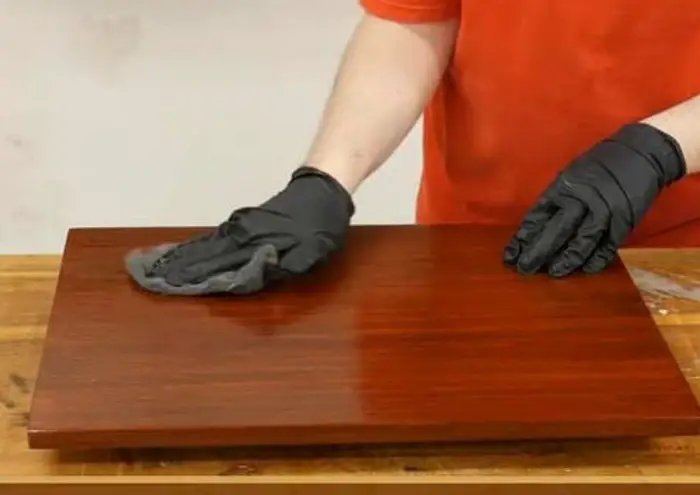
So then, should you stain or paint poplar wood? Staining is a better option than painting. This is especially true when you want to show off the wood’s texture and grain. The reason is that, unlike paint, stains usually penetrate the wood fibers, preserving the natural look of the wood.
However, if you want your poplar wood to have a protective barrier against humidity, moisture, and other elements, you should paint it. Unlike stains, paint offers better protection against decay, rotting, and warping, extending the wood’s lifespan.
Helpful Tips When Staining Poplar Wood
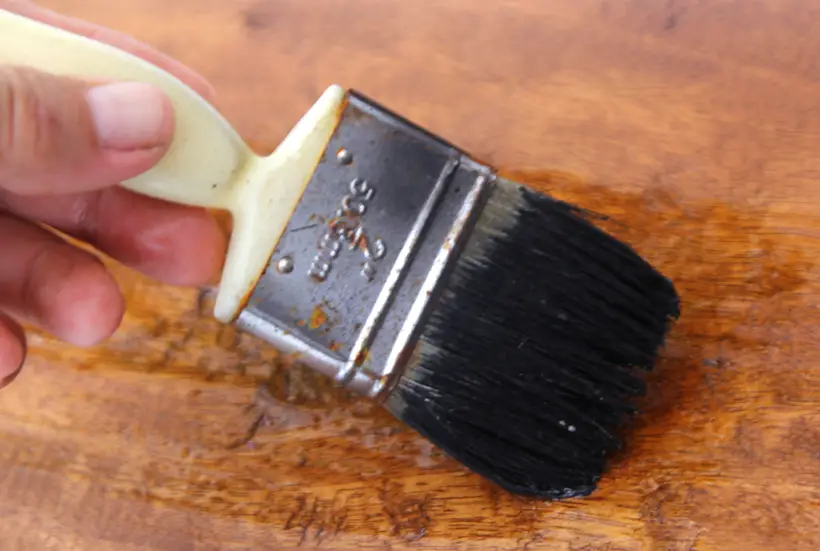
Staining poplar wood enables you to enhance its natural beauty. So, below are tips to help you achieve the best results.
- You should not apply the stain in extreme temperatures or direct sunlight. This could affect the drying process, leading to uneven results.
- Be sure to test the stain on scraps before applying it to your primary wood to be sure it is the correct color.
- Use a gel or wiping stain instead of a penetrating stain for added control over the color. This is because a penetrating stain will quickly soak in too deeply, leading to blotchy results.
- If you notice any streaks as you apply the stain, use a clean cloth to remove them before the stain dries up.
- For excess stains, you should wipe them off along the direction of the wood grain to prevent splotches. You must do this while the dye is still wet.
FAQs
In this section, you can find answers to frequently asked queries regarding staining poplar wood.
Q: Does poplar wood stain better than pine?
Like poplar, pine is not the best wood for staining. This is because both kinds of wood are soft. As such, they tend to absorb stains unevenly, resulting in a blotchy finish unless you follow the proper application technique.
Q: Can I stain poplar wood myself, or should I hire an expert?
Staining poplar wood is an easy DIY project. Therefore, anyone with some woodworking experience can complete the job. However, there is no harm in hiring a professional if you are unsure about the process.
Q: Does staining poplar wood make it water-resistant?
Staining alone does not make the wood completely water-resistant. However, you can enhance the wood’s water resistance properties by applying a sealer like polyurethane on top of the stain.
Final Words
With proper sanding, you can stain poplar wood with minimal effort while utilizing a wood conditioner. And for even better results, you should know how to finish poplar wood.
With that said, choosing the best gel stain for poplar is equally critical in enhancing the wood’s texture and grain. However, painting would be the best option if you would like your poplar to have a protective barrier against weather elements.



